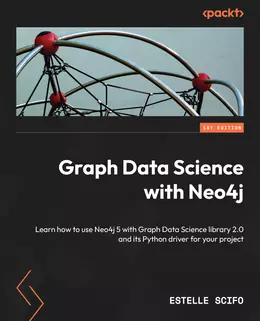Graph Data Science with Neo4j

eBook Details:
- Paperback: 288 pages
- Publisher: WOW! eBook (January 31, 2023)
- Language: English
- ISBN-10: 180461274X
- ISBN-13: 978-1804612743
eBook Description:
Graph Data Science with Neo4j: Supercharge your data with the limitless potential of Neo4j 5, the premier graph database for cutting-edge machine learning
Neo4j, along with its Graph Data Science (GDS) library, is a complete solution to store, query, and analyze graph data. As graph databases are getting more popular among developers, data scientists are likely to face such databases in their career, making it an indispensable skill to work with graph algorithms for extracting context information and improving the overall model prediction performance.
Data scientists working with Python will be able to put their knowledge to work with this practical guide to Neo4j and the GDS library that offers step-by-step explanations of essential concepts and practical instructions for implementing data science techniques on graph data using the latest Neo4j version 5 and its associated libraries. You’ll start by querying Neo4j with Cypher and learn how to characterize graph datasets. As you get the hang of running graph algorithms on graph data stored into Neo4j, you’ll understand the new and advanced capabilities of the GDS library that enable you to make predictions and write data science pipelines. Using the newly released GDSL Python driver, you’ll be able to integrate graph algorithms into your ML pipeline.
- Use the Cypher query language to query graph databases such as Neo4j
- Build graph datasets from your own data and public knowledge graphs
- Make graph-specific predictions such as link prediction
- Explore the latest version of Neo4j to build a graph data science pipeline
- Run a scikit-learn prediction algorithm with graph data
- Train a predictive embedding algorithm in GDS and manage the model store
By the end of this Graph Data Science with Neo4j book, you’ll be able to take advantage of the relationships in your dataset to improve your current model and make other types of elaborate predictions.
